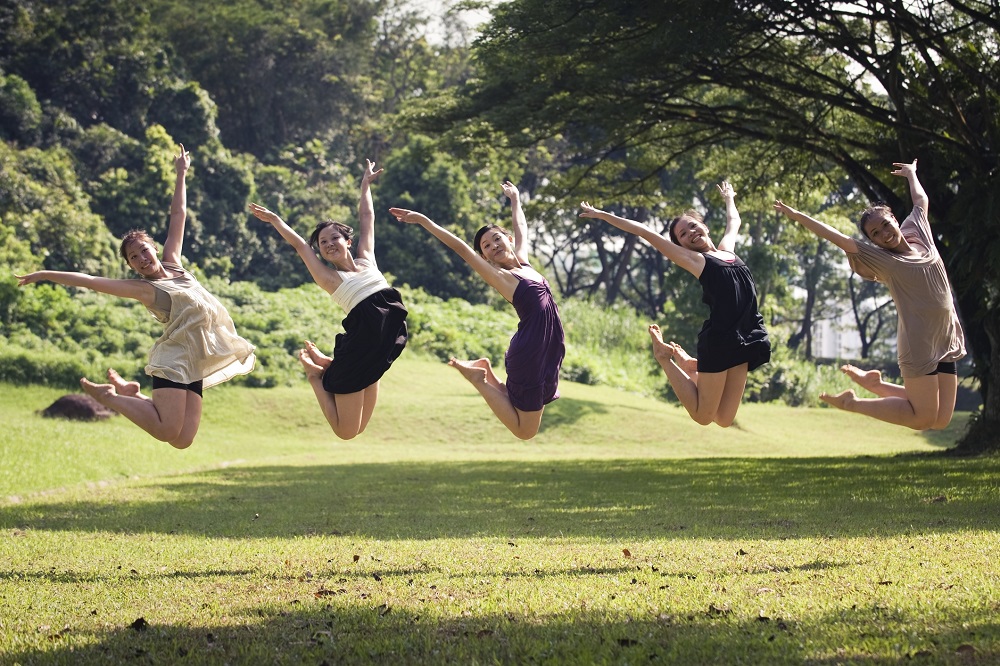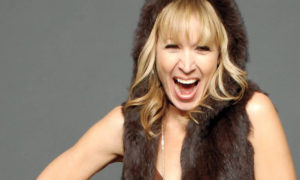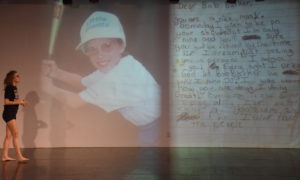Have you ever experienced the blossoming of a relationship, either friendship or romantic, only after dancing together? Have you reached a place of fully empathic understanding concerning a group of people or issue only after seeing it depicted in movement? Have you witnessed the graceful physical connection amongst children playing double-dutch?
There’s something in us that gives dance and movement the ability to uniquely connect us. Let’s look at the science behind how and why dance and movement has this power, allowing us – no matter age, language and culture, or philosophical positioning – to reach greater common understanding.
The key to empathic understanding of another being, scientists believe, lies in mirror neurons. Italian scientists at the University of Parma first found evidence of these in macaque monkeys in 1991; the same neurons fired upon the experience of obtaining food as did upon eating. Experts have yet to isolate a single mirror neuron in humans, yet generally hypothesize that humans have a network of inter-working mirror neurons.
It is what we think leads us to imagine the taste of something delicious we see someone else eating, feel a tightness in the throat as we see someone we care about crying and have an impulse to laugh upon seeing another person laugh. It could very well also be what causes that pure physical absorption we feel upon watching a powerful piece of dance art, or what brings our very body so powerfully into a story we tell through dancing ourselves.
How does this develop in us? Psychologists specializing in the attachment phase of early childhood generally believe that a caregiver’s physical interactions with a child – including simple games such as “peek-a-boo” – can impact a person’s sense of self and how that self relates with others. This could very well be the growing and refining of a person’s mirror neurons.
On the nurture side of the nature/nurture debate, the quality (or lack thereof) of empathic connections throughout one’s lifetime could very well play a role in the keenness strength of one’s mirror neurons. Scientists have yet to find conclusive results for any of this, yet interest is high. This is an exciting new frontier of modern neuroscience. We do know from experience, however, how dancing and communal movement can more closely connect us. Here are a few key areas of difference between us that it can begin to dissolve.
Bridging generation gaps
Yes, time can take its toll on the body, sometimes limiting mobility and bringing pain. By and large, however, people of all ages can move. This writer served as a Dance/Movement Therapy intern at an assisted living center. Fellow interns and I showed the residents our “moves” from today, and they showed us steps from jitterbug and foxtrot. Teenagers and older adults can do the Macarena (during which it’s hard not to at least smile, if not chuckle).
Whatever challenges we face today, dance can also illuminate the challenges of the past, in works such as the wonderfully crafted American in Paris. Dance further illuminated the story, such that we could feel it in our very bones. Young and old could then share a deeper understanding of the challenges we faced then, and how they relate to the ones we face now. From there, we can work toward solutions together. Ten or 20, 40 or 80, we all have bodies that can move as well as better understand through another’s movement.
Bridging culture and language gaps
Dance has a unique ability to express without words. Sure, visual art and instrumental music can do that, but not as much powerfully involving our souls through our bodies. People who speak completely different languages, and come from separate cultural backgrounds, can find something meaningful in a well-constructed work of dance art. Mindful crafting of the human body’s physical expression can hit on universal truths. Audiences worldwide show they recognize and appreciate this with their patronage, for instance.
Just about every well-established dance company tours internationally at one point or another, and some annually. Traveling dancers gain a broader worldview that can contribute to their artistry. Audiences can experience wonderful shifts of perspective about people worldwide – and short of that, just learn things about other people and places that are simply fun and interesting to know. It’s all possible through movement, and openness to use it in connecting cultures.
Bridging ideological gaps
Across the political and ideological spectrum, there’s at least one common agreement: America, and much of the world for that matter, is very divided right now. Just look at Brexit, the contentious most recent French election and tensions on the Korean peninsula. Yet no matter where one lies on the left/right (liberal/conservative) spectrum, good dance is good dance.
There certainly may be disagreements on aspects such as funding and appropriateness (of costuming, subject matter, et cetera). Yet the power and beauty of moving bodies can be something striking, and even illuminating, for all of us – no matter personal and communal ideology. When it comes to social dance, this is even more the case. Politics and related philosophical stances do not have to be present in the dancing at a wedding, a high school homecoming or a night club.
Yes, dance can take a political/ideological stance. Those things don’t leave us as we move. Artists can furthermore use movement as a vehicle for expression of such stances, therein meaningfully adding to cultural discourse on the issues we face. The product can be something that can help someone from the other side of the spectrum to see the value within another’s opposing beliefs. That is one way that conversations can begin, the kinds of conversations that work toward viable solutions. But dance can also be movement simply for joy, for health, for communal unity and more. That’s something that everyone, “right” or “left”, can get behind.
By Kathryn Boland of Dance Informa.















